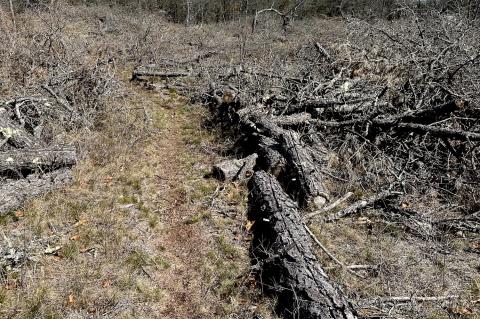Rain on Thursday notwithstanding, an unusually dry fall season persists statewide, raising concerns about fire and impact on crops. Last month, the county had only .23 inches of rainfall, just off the record low for October precipitation, and even with rain on Thursday, more than 99 percent of the county was considered to be in "severe drought."
Climate Change
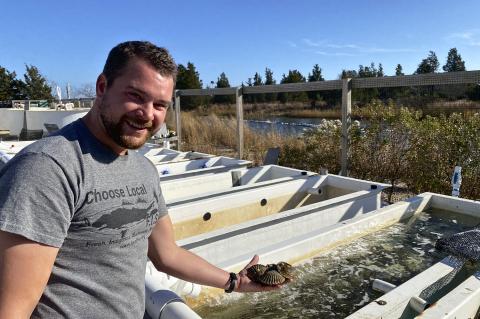 There May Be Hope Yet for Peconic Scallops
There May Be Hope Yet for Peconic ScallopsOver the past five-plus years, Peconic Bay scallops have suffered mass die-offs blamed on an infectious parasite, but researchers at the Cornell Cooperate Extension have found a source of scientifically informed hope: genetic diversity.
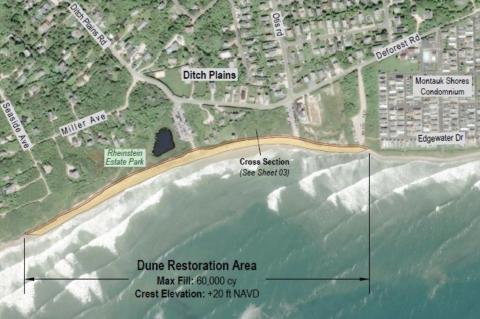 Ditch Plain Dune Restoration Is in the Pipeline
Ditch Plain Dune Restoration Is in the Pipeline The size of a dune that East Hampton Town is considering building at Ditch Plain may ultimately be dictated by a Federal Emergency Management Agency calculation that would make it nearly 20 feet high.
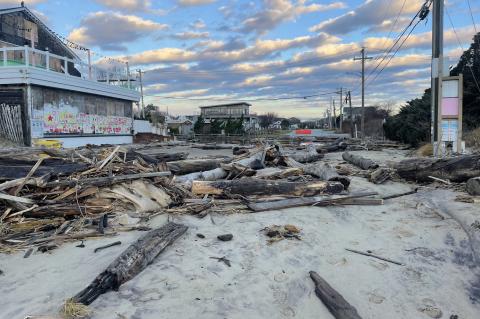 In Montauk, What If, and What Then?
In Montauk, What If, and What Then?Eventually, a major hurricane is coming, and Montauk — whose lifeblood is the ocean — is not ready. If the hamlet is hit by a truly big hurricane, it won’t be able to just get back to its feet and walk on. To make even a dent in the task of full recovery will require an army of dedicated experts, officials, and residents — and a yacht-load of money.
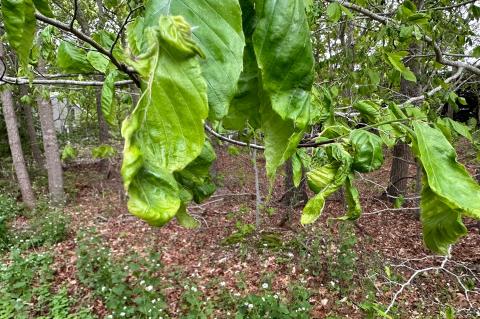 Small Relief to Ease Pain of Beech Leaf Disease
Small Relief to Ease Pain of Beech Leaf DiseasePlaying out in the background of the rather apocalyptic and very visible destruction of the East End’s native pitch pines has been an equally devastating disease killing beech trees. With that in mind, East Hampton Town is working on ways to help residents remove dangerous trees, without running afoul of clearing restrictions.
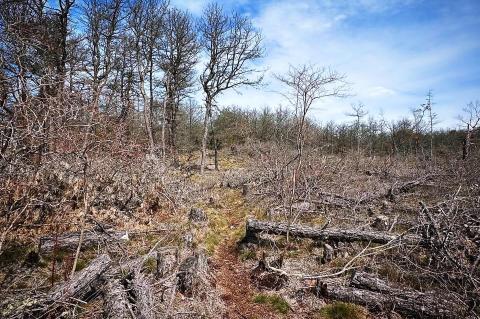 Pine Beetle Scourge Fans Fears of Fire
Pine Beetle Scourge Fans Fears of FireThe end-times landscaping job wrought by the southern pine beetle along Montauk Highway in Amagansett could seem pretty compared to how it would look after a fire. “It’s a giant tinderbox out there,” said Chris Beckert, who is in his fourth year as chief of the Amagansett Fire Department.
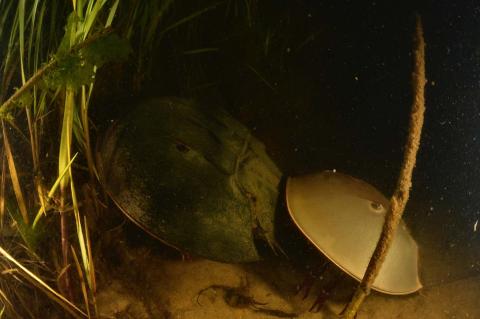 A Wild Night Out With the Horseshoe Crabs
A Wild Night Out With the Horseshoe CrabsIt’s mating season for the horseshoe crab, and last week, a group monitoring the crab for the Cornell Cooperative Extension dropped in on an all-night orgy repeated along bay beaches for 400 million to 500 million years.
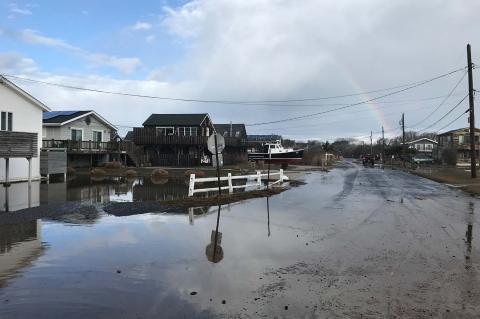 Seeking Solutions at Ditch Plain
Seeking Solutions at Ditch PlainWith a sense of urgency, the East Hampton Town Board discussed the hiring of a surveyor to assess current beach profile conditions at Ditch Plain in Montauk and to determine the necessary volume and source of sand, its placement, and the cost to restore it to a healthy level.
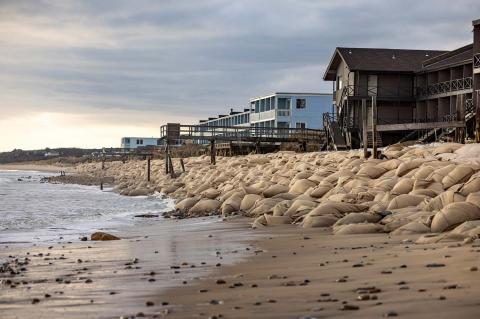 Storms Bring New Urgency to Montauk Beach Project
Storms Bring New Urgency to Montauk Beach Project“Now is the hard moment,” East Hampton Town’s planning director told the town board during an assessment of a ravaged coastline after three storms in the past month, as mobilization for the downtown Montauk portion of the long-awaited Fire Island to Montauk Point beach renourishment project was getting underway.
 Major Montauk Beach Renourishment Project to Begin Soon
Major Montauk Beach Renourishment Project to Begin SoonMobilization for the Montauk portion of the 83-mile-long Fire Island to Montauk Point beach renourishment project is to begin Thursday, with temporary road closures to allow mobilization of very large equipment including bulldozers and 35-foot lengths of piping. Beach infill is to begin next month, when an offshore dredge will pump 80,000 cubic yards of sand a day onto the downtown beach.
 It Felt Like a Hurricane Hit Montauk
It Felt Like a Hurricane Hit MontaukNear-hurricane-level winds, tides, and rain blasted the East End on Monday, leaving downtown Montauk with far more damage than any other place in Suffolk County.
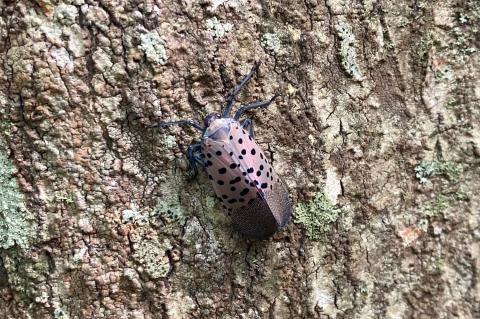 Destructive Spotted Lanternfly Is Found Here
Destructive Spotted Lanternfly Is Found HereThe spotted lanternfly, a "planthopper" pest now common in New York City, has made its way to the East End, where it is a threat to wineries and native trees like the black walnut, silver maple, willow, and oak.
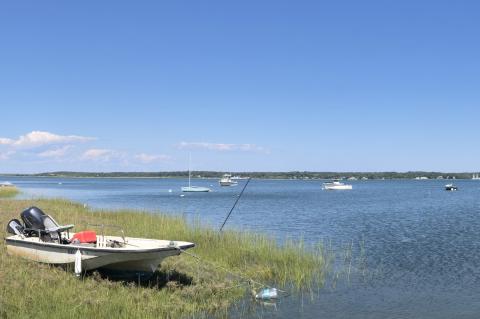 Long Island Water Quality Has Never Been Worse
Long Island Water Quality Has Never Been WorseOur coastal zones have hit an all-time low in water quality, with impairments that violate New York State and federal guidelines ubiquitous, according to a report released last week. East Hampton Town waterways, while benefiting from ocean tidal flushing, are not immune from such impairments.
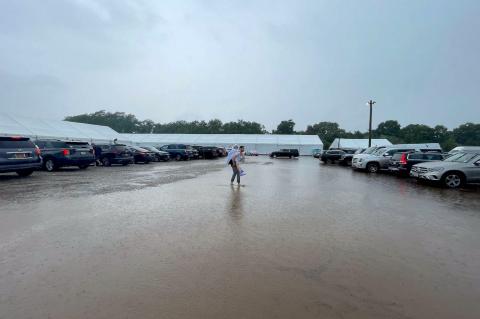 Flash Floods Swamp Parched South Fork
Flash Floods Swamp Parched South ForkAbandoned cars, flooded basements, muddy pools, sodden festivals, panicked antiques dealers — those were the scenes on Sunday as the flooding that has overwhelmed parts of New York State’s Hudson Valley, Vermont, and many other parts of the world was visited on a South Fork packed with summer visitors. The East Hampton Town Highway Department estimated that nearly seven inches of rain fell over a sustained period of perhaps unprecedented intensity, while the Suffolk County Water Authority cited a rain gauge in Sag Harbor that put the rain total at 2.67 inches.
 East Hampton's Forests Are in Trouble
East Hampton's Forests Are in TroubleEast Hampton Town’s forests are under assault from multiple species, the town board was told on Tuesday, and while invasive insects are a major component of the ongoing threat to them, “more aggressive deer management” was the recommendation to alleviate forest degradation.
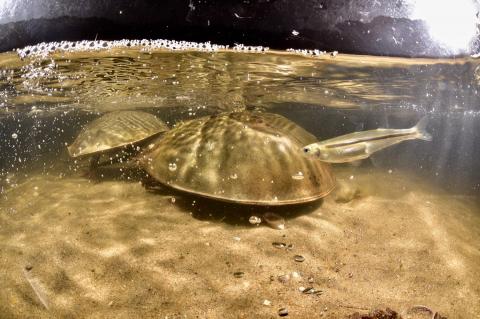 Modern Problems for the Ancient Horseshoe Crab
Modern Problems for the Ancient Horseshoe CrabHarvested for bait and their blood, horseshoe crabs, which have endured on earth for over nearly 500 million years, are in a state of decline in the New York area.
 More Trees Will Fall to Stop Pine Beetles
More Trees Will Fall to Stop Pine BeetlesThe bright blue slashes of paint stand out like neon under a black light, marking the trunks in a stand of healthy pine trees along both sides of Cranberry Hole Road on Napeague that will be sacrificed to protect the overall health of the region’s forests as the southern pine beetle continues its destructive eastward march.
 Dry Coastal Ponds Are a Warning
Dry Coastal Ponds Are a WarningThe abnormally low water table coupled with the spread of invasive species are combining to threaten the long-term health of the East End’s coastal plain ponds.
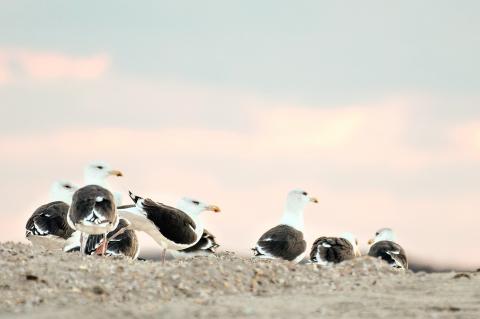 On the Wing: The State of the Birds, Good and Bad
On the Wing: The State of the Birds, Good and BadBird populations have declined steeply over the last 50 years, but the North American Bird Conservation Initiative's "State of the Birds 2022" report, published in early October, balanced the gloom with some success stories and offered strategies for future action which would "bring birds back."
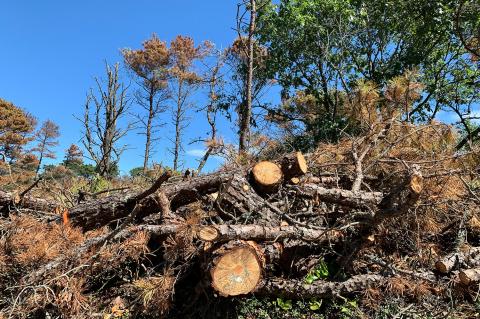 Pine Beetles Wreaking Havoc on Napeague Forest
Pine Beetles Wreaking Havoc on Napeague ForestSome 3,200 pitch pines on Napeague were being felled this week, victims of the southern pine beetle infestation that has killed thousands of trees in East Hampton Town since 2017.
 What’s Killing the Beech Trees?
What’s Killing the Beech Trees?A microscopic wormlike creature is rapidly killing American and European beech trees on the East End, and there is not much to be done about it. Beech leaf disease appears to have started in the United States in Ohio sometime before 2012. By 2019, it was on Long Island.
 Three to Six Major Storms Are Predicted in 2022
Three to Six Major Storms Are Predicted in 2022If the forecasters at the National Oceanic and Atmospheric Administration’s Climate Prediction Center are right, the 2022 Atlantic hurricane season will be the seventh consecutive year of above-average hurricane activity, with 14 to 21 named storms, three to six of which could become major hurricanes.
 An Ominous Outlook for Coastal Areas
An Ominous Outlook for Coastal AreasThe currently projected range of sea level rise “will transform East Hampton into a series of islands with permanent submergence of low-lying areas as early as 2070.” That is the ominous conclusion that leads a draft of the town’s Coastal Assessment and Resiliency Plan, issued last week.
 Southern Pine Beetle Infestation Spreads
Southern Pine Beetle Infestation SpreadsThe southern pine beetle infestation that has killed thousands of pitch pines in East Hampton Town since 2017 is continuing its destructive march, with thousands more dead and dying trees identified this year.
 Threat of Sea Level Rise Is Even Greater
Threat of Sea Level Rise Is Even GreaterThe threat of sea level rise is greater than that presented in the Intergovernmental Panel on Climate Change's own dire reports on climate change, a renowned and controversial scientist told a small group in Sagaponack last week, but similarly divisive proposals to combat anthropogenic climate change would be both safe and effective, he said.
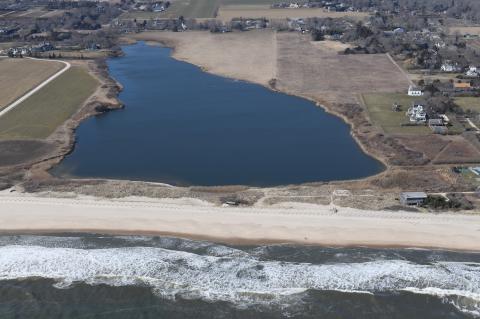 Bad News for Water Bodies in Annual Report
Bad News for Water Bodies in Annual ReportSummer water temperatures are rising in East Hampton, stressing organisms including bivalves and seagrasses. Meanwhile, the water quality in Wainscott Pond is rapidly worsening, with 2020 measurements of a toxin "unlike anything we'd ever seen," the town trustees were told on Monday.
 Moving Toward a 'Climate Emergency' Declaration
Moving Toward a 'Climate Emergency' DeclarationThe momentum building for meaningful action on climate change on the national level was reflected in East Hampton on Tuesday, when the town board heard, and responded enthusiastically to, a recommendation from its energy sustainability committee to declare a climate emergency, something 1,874 jurisdictions in 33 countries have already done.
 'Soft Solution' for Beach in Montauk
'Soft Solution' for Beach in MontaukWith many parts of the Town of East Hampton at moderate, high, or extreme risk of flooding, the planned October start of the project's implementation was prominent in "Montauk's Coastal Resiliency and the Future of Our Beaches," a Dec. 16 webinar hosted by Concerned Citizens of Montauk.
 East Hampton's Battle Against Pine Beetle Resumes
East Hampton's Battle Against Pine Beetle ResumesThe southern pine beetle, an invasive pest now considered by the D.E.C. to be an established species on the South Fork, has made a comeback in East Hampton Town and regions of the Central Pine Barrens, town and state officials said this week.
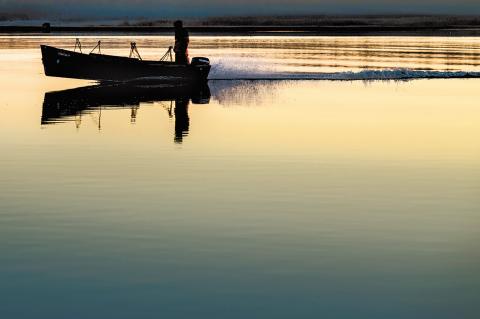 A Perfect Storm Hits Bay Scallops
A Perfect Storm Hits Bay ScallopsThe “four horsemen of the ocean climate change apocalypse” have arrived, a scientist told those attending a symposium Friday on the bay scallop die-off of 2019, and they pose a serious threat to the embattled species.

